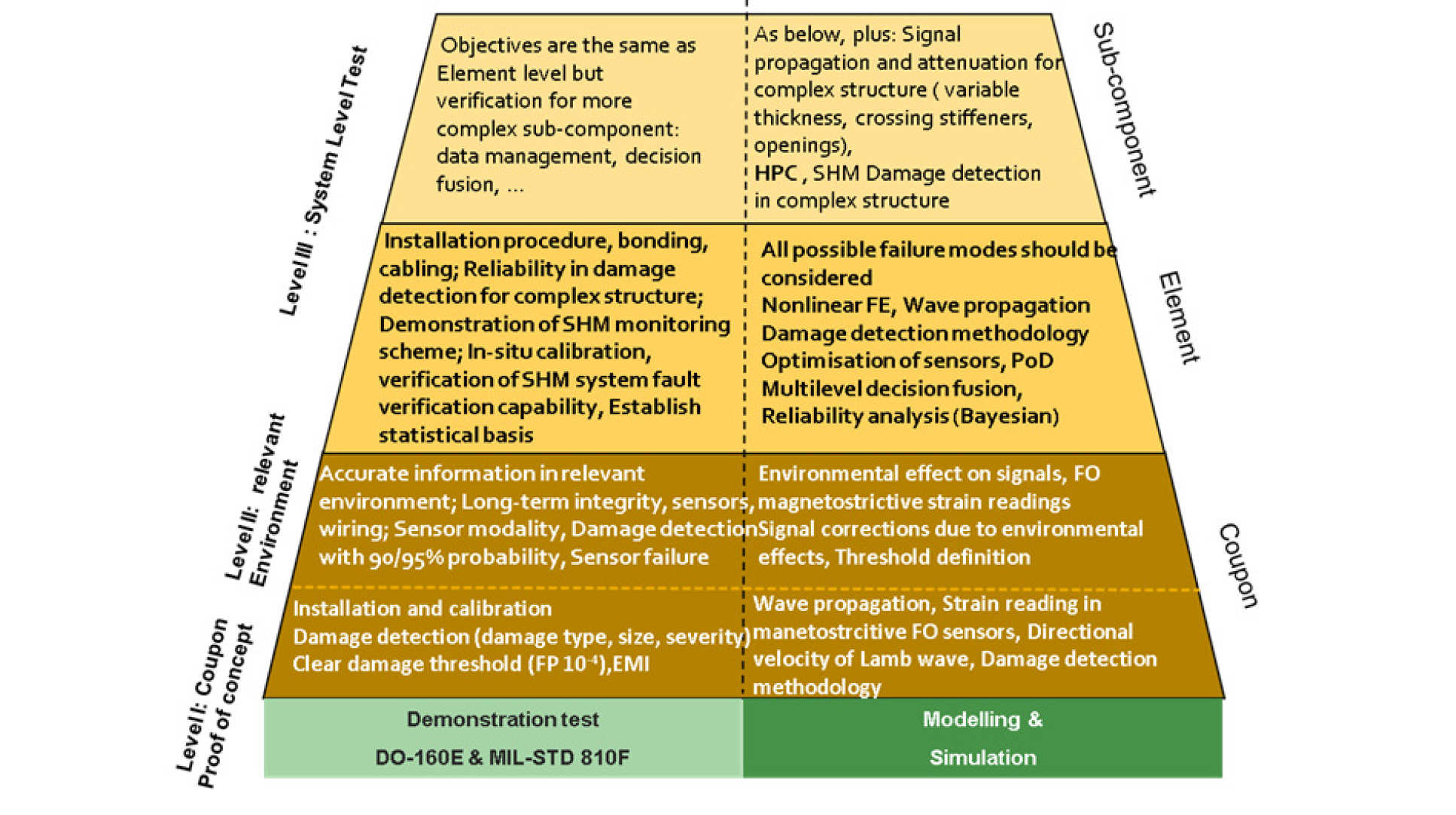Roadmap to Certification
The reliability of the diagnosis is closely related to the reliability of the SHM components. An effective architecture should integrate the SHM sensors/components into the aircraft without any appreciable adverse effects on the performance of the host structures or other aircraft system. The most significant aspects of the system architecture are the physical and functional attributes:
- Physical architecture: sensors, transducers, wires, data acquisition systems, amplifiers, other components and subsystems as well as their interconnections.
- Functional architecture: performance requirements (i.e. damage detection (BIVID), reliability, etc).
SHM system can be divided into on-board (sensors, wires, connectors) and ground components (data acquisition system, PC). An example of the this division is shown below.

The on-board components must survive the load and environmental conditions of the flight without any compromise in their performance. Therefore, their performance must be assessed through a range of integrity test. Similarly, the probability and reliability of damage detection must be assessed and validate based on the ground condition, as part of the certification roadmap for condition based maintenance. Although no set framework exists for certification and testing of SHM systems, a set of recommendations are available from the federal aviation administration (FAA) together with existing standards, e.g. RTCA DO-160 Environmental conditions and test procedures for airborne equipment:
Concept of on-board operation:
The on-board requirement of the SHM system will follow RTCA/DO-160C for environmental condition and test procedures of airborne equipment to ensure the durability, longevity and reliability of the installation and operation of the on-board equipment, as included in the certification guidelines. System architecture to identify the hardware/software design considering the aircraft design criteria, the architecture of the aircraft, architecture of the aircraft support system and the cost benefits of the chosen architecture. The SHM system maintenance should not adversely affect the performance, reliability or maintainability of the host structure.
Concept of on-ground operation:
The on-ground requirements are primarily directed towards condition based monitoring (CBM). The ground operational requirements shall include the following:
- Damage detection should be decomposed into its elementary functions i.e. existence of damage, damage location, damage size and damage severity.
- A development assurance level (DAL) for each of the elementary functions listed above based on the adverse consequences of the failure on airworthiness and operational reliability.
- Quality characteristic of SHM measurements and functions e.g. accuracy, reliability, precision and durability.
- The SHM system operation should not adversely affect the performance, reliability or maintainability of the host structure.
- The requirement for ground based equipment should be the same as those of existing or known equivalent from non-destructive testing (NDT).
Building Block Concept:



